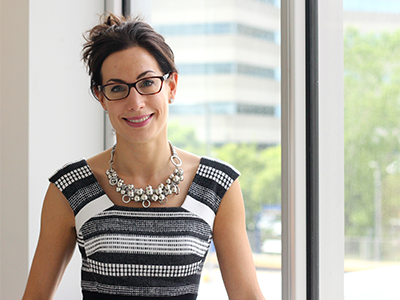Stem cell transplants, a potential cure for patients with life-threatening diseases
A stem cell transplant is a procedure that can treat or cure a number of conditions: bone marrow diseases, inherited immune disorders, hemoglobinopathies (defects in red blood cells) and some types of cancer, such as leukemia, lymphoma and myeloma. Dr. Gizelle Popradi, hematologist and director of the Stem Cell Transplant Program of the McGill University Health Centre (MUHC) tells us more about this life-saving therapy and its use in the treatment of cancer patients.
What are stem cells?
Stem cells are amongst the most immature and the least frequent of all the blood cells in the bone marrow. They can stay dormant for a long time until they’re needed to replace other cells, and when that happens, they replace themselves. In normal conditions, we never really run out of stem cells.

How does a stem cell transplant help to treat cancer patients?
Many cancers can be cured with high doses of chemotherapy or radiation therapy, but sometimes the doses needed to kill the cancer are also lethal to the bone marrow of the patient. A stem cell transplant is used to regenerate the bone marrow after a treatment to destroy the cancer has been given. Before chemo- or radiation therapy, the patient’s stem cells are collected and frozen. Once the treatment is over, they are reinfused. That’s called an autologous transplantation, which means the donor and the recipient are the same person. These types of transplants are regularly used to treat patients with lymphoma or multiple myeloma.
What about a transplant where the donor and recipient are not the same person?
When stem cells come from another person or umbilical cord blood, we call it an allogeneic stem cell transplant. In this case, besides helping bone marrow to regrow after cancer therapy, the stem cells may help fight residual cancer cells in the recipient. This is called the graft versus tumour effect.
How do you select donors?
We first look to brothers and sisters to see if they are compatible donors and a close match. If a sibling is not a good match, we then consult national and international donor registries to find an unrelated donor or umbilical blood unit. However, haploidentical transplantation – a transplant using cells from a sibling who’s only a partial match – can also be effective.
What about complications?
Sometimes the immune system that comes with the donor’s stem cells can attack the recipient’s organs. This is called graft versus host disease (GVHD), and it’s common after allogeneic transplants, occurring in 20 to 80 per cent of cases. There are two types of GVHD – acute and chronic – and the intensity can range from mild to severe, with few patients suffering from the severe forms.
Tell us about the Stem Cell Transplant Program of the MUHC.
The first stem cell transplant at McGill was performed at the Montreal General Hospital in 1979. Presently, our program is FACT certified (Foundation for the Accreditation of Cellular Therapy) and recognized by the Quebec government as a centre of excellence for related and unrelated stem cell transplants. Our program is growing - we are receiving an increasing number of referrals from Montreal hospitals and other centres elsewhere in the province. We have a brand new transplant ward at the Glen site, with a specialized lab and capabilities for stem cell collection and storage. Besides hematologists, our program is well supported by a number of medical specialists – infectious disease specialists, respirologists, intensivists and others – who have the expertise to treat our patients.
How do you prepare a patient for a stem cell transplant?
We provide patients with as much information as possible before the transplant: they meet the physician, the pivot nurse, the transplant coordinator and one of the transplant nurses. We also offer them the chance to talk to a patient who has already had a transplant. Sometimes, talking to someone who has been down that road can help.
Who can donate stem cells?
Any adult under 35 who is in good health can donate stem cells. The recipients of allogeneic transplants always need donors, so I would encourage people to register at Héma-Québec. It’s important to raise awareness about this treatment that can potentially cure people with otherwise incurable diseases.
